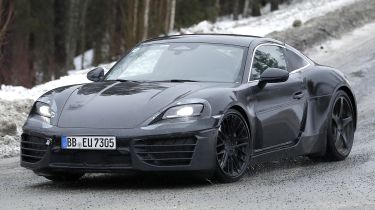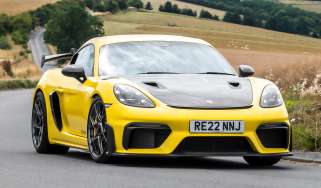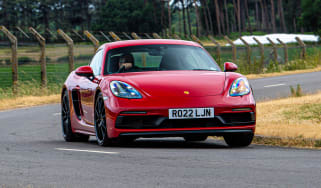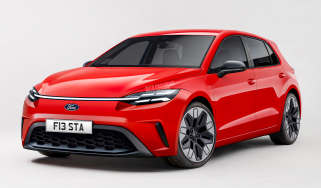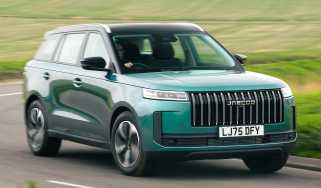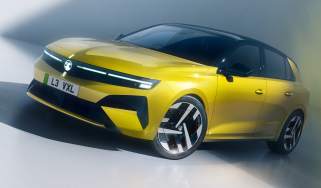Porsche Cayman EV testing gets serious at the Nurburgring
Cutting-edge battery technology is in store for Porsche’s all-electric sports car
Pure-electric power has spread to city cars, supercars and almost everything in between, and Porsche is looking to take the fledgling electric sports car market by storm with the new Cayman EV - which we’ve now seen testing at the Nurburgring for the first time.
The company has been developing the new coupe alongside its open-top Boxster sibling, which will also ditch its petrol engine in favour of an all-electric powertrain in the replacement for the current 718-generation models.
Technical details on the upcoming electric models are still under wraps, although Porsche has been testing the waters for some years now, with a preview of sorts coming in the shape of the Mission R concept back in 2021.
The electric sports car project has been delayed too. Porsche partnered with battery supplier Northvolt - which was expected to provide the battery set-up for the Cayman and Boxster EVs - in 2019, but Northvolt filed for bankruptcy in March this year. This means Porsche may well have to go down another route to supply batteries for its sports cars, with one option being Croatian hypercar maker Rimac, who’s worked with Porsche before on the Taycan and 911 GTS hybrid.
We expect dual-motor capacity for the Cayman and Boxster EVs with power outputs exceeding that of the current top-rung combustion-engined car - the 496bhp Cayman GT4 RS - to counter the increase in weight brought on by EV powertrain. Porsche hasn’t given us details on the size of the Cayman EV’s batteries, but they’re expected to sit in the middle of the car, behind the driver. That will allow for a lower driving position and a lower side profile too.
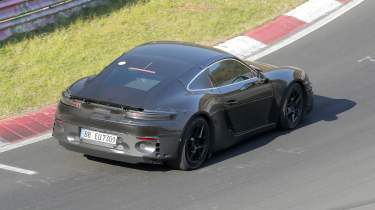
We’ll have to wait and see what kind of performance the Cayman EV will offer when it’s launched next year, but thanks to these spy images we already have a good idea of how it’ll look. The open-top Boxster EV and Cayman EV we’ve seen so far have a similar amount of camouflage on them with a lot of production-ready details on show.
The new Cayman’s body appears to adopt the same mid-engined silhouette as the existing car’s, although the gently sloping roofline and bonnet look slightly longer than before, giving it a more 911-like look in profile. The disguise makes it hard to see, but we suspect the windowline will kick up more aggressively, as with the current car, while elements such as traditional door handles will remain in place of the smooth pop-out units on the 992-generation 911.
We can also see a small side intake placed just behind the door, which could bring cooling air to the electric motor or battery pack that are packaged behind. This will likely sit within a futuristic panel ahead of the rear wheels, dictating aero and helping clean the airflow around the rear bumper. Behind those huge wheels we can see a set of rather large brake discs - drilled for cooling both up front and in the rear.
Porsche will continue with its trademark lightbar on the new car, paired with a small rear aero device, which could be movable, as on all previous Boxsters and Caymans. This will sit below a new and much more streamlined fully glass tailgate that runs down the entire length of the rear towards the wing.
Up front, the Cayman will probably share the bulk of its design with its Boxster sibling, where the traditional set of four-point headlights will sit either side of a low bonnet. The prototype in these pictures, and almost all of the Boxster prototypes that have yet been spied on the road so far, continue to use headlights that look almost identical to those on the pre-facelift Taycan.
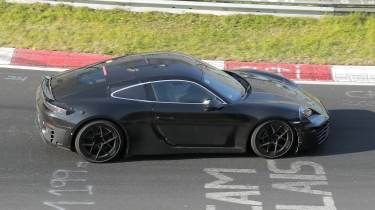
Beneath these Porsche has fitted vertical intake vanes that are likely movable. This sort of ‘active’ intake has already been seen on other high-spec models like new 911 GTS, pointing towards the fact that the new Cayman and Boxster could be revealed in a mid-to-high performance variant first, before more affordable models join the line-up in due course.
We expect to see a wholesale revision of the interior, too, using lots of design and functional elements from the 992-generation 911. There should also be a totally new digital interface that will replace the ageing, but still functional interior of the previous 981 generation.
Yet the big mystery remains about what we’ll see when Porsche finally reveals technical details about its forthcoming electric sports car. There have been rumours that a dip in EV sales (and resale values) has caused Porsche to reconsider the future of its electric sports car, but on this evidence there’s nothing to suggest the company is turning back.
Did you know you can sell your car through Auto Express? We’ll help you get a great price and find a great deal on a new car, too.
Find a car with the experts

